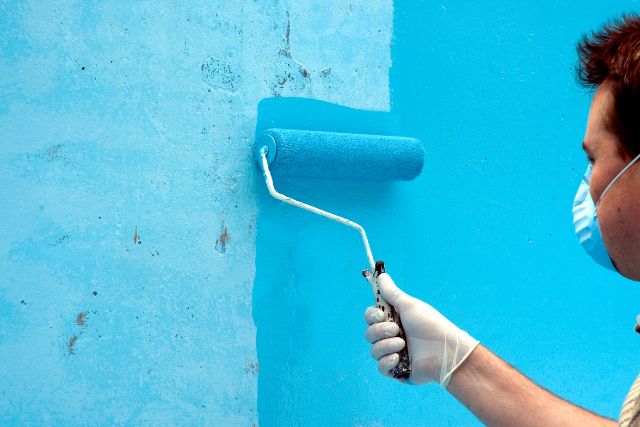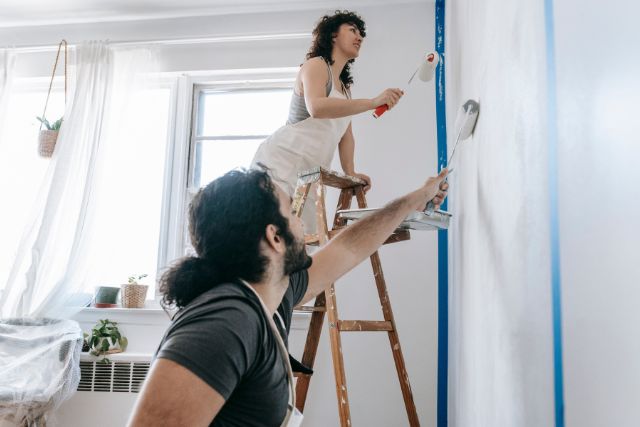Embarking on a DIY painting project can be an exciting and rewarding endeavor, especially in Australia where home improvement is a popular pastime.
However, many homeowners underestimate the hidden costs associated with DIY painting.
This comprehensive guide aims to shed light on those often-overlooked aspects, ensuring that you’re fully informed before you dip your brush into the paint.
Introduction to DIY Painting in Australia
Australia’s unique climate and lifestyle have made DIY projects a common choice for many homeowners.
DIY painting, in particular, is seen as a cost-effective way to refresh and personalize living spaces. But, before you start, understanding the full scope of the project is crucial.


Popularity of DIY Projects in Australian Homes
In recent years, DIY projects have seen a surge in popularity across Australia. Painting, due to its perceived simplicity and immediate impact on a home’s aesthetics, ranks high among these projects.
However, what starts as a simple task can quickly become complicated and costly.
Understanding the Basics of DIY Painting
DIY painting involves more than just applying a new colour to your walls. It requires planning, preparation, and knowledge of materials and techniques.
A successful paint job not only depends on the paint quality but also the tools and methods used.
Initial Financial Outlays
While saving on labour costs is a significant advantage of DIY painting, initial financial investments can be higher than anticipated. Understanding these costs is essential for budgeting your project accurately.
Cost of Quality Paints and Primers
The Australian climate can be harsh on exterior paints, making quality a non-negotiable factor. High-quality paints and primers, which withstand the test of time and elements, can be costly.
Moreover, different surfaces require specific types of paints and primers, which can add to the expense.
Essential Tools and Equipment for Painting
Besides paint, essential tools like brushes, rollers, paint trays, and ladders contribute to the cost. Investing in quality tools can increase efficiency and improve the finish but will impact your initial budget.


Additional Supplies: Brushes, Rollers, and Tape
Additional supplies such as painter’s tape, drop cloths, and sandpaper are often overlooked in budget planning.
These supplies, while individually inexpensive, can collectively add a significant amount to your overall cost.
Hidden Expenses to Consider
There are several hidden expenses in DIY painting that many fail to account for. These can significantly affect the overall cost and outcome of your project.
Preparation Costs: Cleaning and Repairs
Preparation is key to a successful paint job. This involves cleaning walls, filling holes, and sanding surfaces.
Materials and tools for these tasks, as well as the time investment, add hidden costs to your project.
Long-Term Durability of DIY vs. Professional Work
DIY paint jobs might not last as long as those done by professionals, leading to more frequent repaints.
Professionals bring expertise and use techniques that ensure longevity, which can be more cost-effective in the long run.
Unexpected Expenses and Overruns
Unanticipated issues such as additional paint layers for coverage, mistakes needing correction, and wear and tear on tools can lead to budget overruns.
These unexpected expenses are a common pitfall in DIY painting projects.


Time Investment and Opportunity Costs
Time is a valuable resource, and DIY projects require a significant time investment. Understanding the time commitment and its implications is vital.
Estimating Time Requirements for DIY Painting
Painting a single room can take several days, including preparation, painting, and drying time. Larger projects can span over weeks, consuming weekends and evenings that could be spent on other activities.
Balancing Painting with Daily Responsibilities
Juggling a painting project with work, family, and social commitments can be challenging. The stress and disruption caused by ongoing DIY projects should not be underestimated.
Opportunity Cost: What You Could Be Doing Instead
Consider the opportunity cost of DIY painting. The time spent on painting could be used for other rewarding activities, like family time or personal hobbies.
Weighing these against the satisfaction and potential savings from DIY painting is crucial.
Health and Safety Considerations
DIY painting involves health and safety risks that are often overlooked. Awareness and preparation for these risks are important, especially in the unique Australian environment.
Risks of Paint Fumes and Chemicals
Exposure to paint fumes and chemicals can pose health risks, particularly in poorly ventilated spaces.
Using low-VOC (Volatile Organic Compounds) paints and ensuring proper ventilation can mitigate these risks.
Physical Strain and Potential for Injury
Painting can be physically demanding, involving ladder work and repetitive motions. Understanding the physical demands and taking appropriate safety measures is essential to avoid injuries.
Safe Painting Practices in the Australian Climate
Australia’s climate presents unique challenges, such as extreme temperatures and high UV exposure.
Adapting your painting schedule to weather conditions and using appropriate protective gear is important for safe DIY painting.


Quality and Aesthetic Factors
The quality and aesthetics of a paint job are crucial. DIY painting projects can fall short in these areas without proper skills and techniques.
Challenges in Achieving Professional-Looking Results
Achieving a smooth, even finish with no brush marks or streaks is challenging. Professional painters have the skills and experience to achieve high-quality results that might be hard to replicate in a DIY project.
Colour Selection and Paint Consistency Issues
Choosing the right colour and maintaining consistency throughout the project is difficult. Mismatched shades and inconsistent application can detract from the overall look of the paint job.
Dealing with Mistakes and Imperfections
Mistakes are common in DIY painting. Knowing how to fix drips, streaks, and uneven coverage is important, but it can add time and cost to your project.


Environmental and Legal Considerations
Painting involves environmental and legal considerations, especially in Australia where regulations on environmental conservation are strict.
Environmental Impact of Paint Products
Paints can have a significant environmental impact. Choosing eco-friendly paints and disposing of paint waste responsibly are important considerations for sustainable DIY painting.
Disposal of Hazardous Materials in Australia
Proper disposal of paint and related materials is not only environmentally responsible but also legally required in Australia. Knowing the local regulations for hazardous waste disposal is essential.
Compliance with Local Regulations and Standards
Australian standards and regulations on painting and renovations can impact your DIY project. Ensuring compliance with these regulations is important to avoid legal issues.
Conclusion: Weighing the Pros and Cons
DIY painting can be a rewarding project, but it’s important to be fully aware of the hidden costs and challenges involved.
Weighing these against the potential benefits and satisfaction of completing a project yourself is crucial in deciding whether to undertake a DIY painting job or seek professional help.


When DIY Painting Makes Sense
DIY painting is a good choice for small projects or those with previous experience. It can also be a fun and rewarding activity if you have the time and resources to dedicate to it.
Scenarios Where Professional Help Is Advisable
For large projects, complex surfaces, or when a high-quality finish is required, hiring a professional painter might be more cost-effective and less stressful.
Professionals bring expertise, efficiency, and quality to the table, which can be worth the investment.
Final Tips for Successful DIY Painting Projects
If you decide to go ahead with a DIY painting project, proper planning, preparation, and patience are key.
Take the time to research, gather the right materials, and prepare your space thoroughly. Remember, a well-executed DIY painting project can add both value and personal satisfaction to your home.





